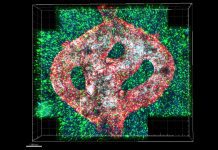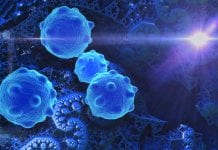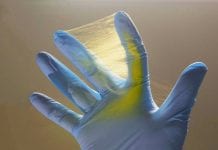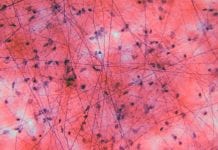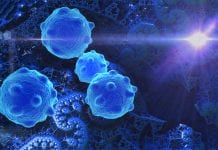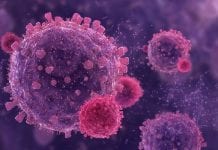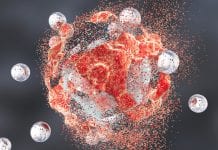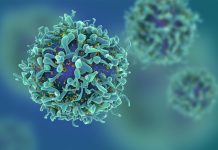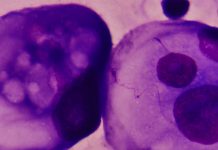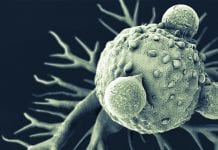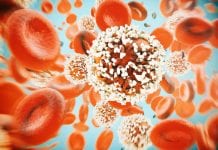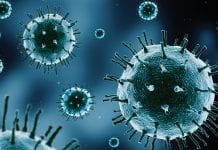Tumours Related News
3D-bioprinted active tumour could transform cancer research
Scientists have used 3D printing biotechnology to create a complex model of a glioblastoma tumour.
Researchers from Tel Aviv University in Israel have used 3D...
New phototherapy technology developed to eradicate cancer
Researchers have developed a phototherapy technology that can help to reduce the pain of chemotherapy as well as increase its effectiveness.
A team of researchers...
Could ‘virtual biopsies’ revolutionise cancer diagnosis?
Invasive tissue biopsies for cancer diagnosis could be replaced with ‘virtual biopsies’ in the future thanks to an advanced new computing technique.
The new technique,...
New findings show hereditary defect causes certain brain tumours
Certain dangerous brain tumours – called medulloblastoma – that affect children are caused by a hereditary genetic defect.
According to new research published in the...
Mitochondria are the ‘canary in the coal mine’ for cellular stress
Mitochondria, tiny structures present in most cells, are known for their energy-generating machinery.
Now, researchers have discovered a new function of mitochondria: they set off...
Want to hear the latest developments regarding Tetra’s hepatocellular carcinoma drug?
Responsible for 80% of primary malignant liver tumours in adults, hepatocellular carcinoma is a common form of liver cancer – but did you know...
Electrospun fibre: a revolutionary new treatment for brain tumours
A revolutionary new treatment can provide effective treatment for brain tumours without exposing patients to the toxic effects of chemotherapy.
University of Cincinnati professor Andrew...
DRS imaging technique can characterise healthy and non-healthy tissue
Research cites 92 studies that assert intra-surgery feasibility of diffuse reflectance spectroscopy.
The results of the review, in which diffuse reflectance spectroscopy (DRS imaging technique)...
Did you know that circulating tumour cells can target distant organs?
Most cancers kill because tumour cells spread beyond the primary site to invade other organs. Now, a USC study found that circulating tumour cells...
Drug resistance tackled using new single-cell genetic method
Scientists have used a new technique to identify genetic profiles of individual cells to model a breast cancer tumour’s potential resistance to a drug.
The...
Did you know that nanoparticle therapy can target lymph node metastases?
Reported in ACS Nano, researchers have developed a nanoparticle therapy to target lymph node metastases for destruction, before they can cause cancer at other...
Learn about the nano-vaccine for melanoma that has proven to be effective
Tel Aviv University scientists have developed a novel nano-vaccine for melanoma, whereby injection of nanoparticles has proven effective in mouse models.
Researchers at Tel Aviv...
Introducing the Hollmén Lab and cancer immunological research
Delve into the world of immunosuppressive cells, molecules and pathways, as the Hollmén Lab prove an insight into their cancer immunological research.
The Hollmén Lab...
No link discovered between cancer and tumour necrosis factor inhibitor
Including data from over 8,000 people, research suggests that there is no link between cancer and tumour necrosis factor inhibitor (TNFi) use in psoriatic...
Triple negative breast cancer treatment may be on the horizon
A team of Brazilian researchers have developed a strategy that could cut off cancer cells from two major food sources – could this be...
Nanobubble technology: Can oxygen rich blood benefit cancer treatment?
According to researchers, nanobubble technology, can deliver oxygen to diseased cells and help restore the effectiveness of cancer treatment.
Professor Joseph Irudayaraj and his team...
Tumour blood flow revealed by image-based computer model
Have researchers uncovered the “Google Maps” equivalent for cancer? Find out how an image-based computer model reveals the finer details of tumour blood flow.
Johns...
A combination of treatments may help fight breast cancer
According to researchers from the University of Helsinki, Finland, cancer cells can be attacked with a ‘drug cocktail’ which can potentially help to fight...
The metallodrug: could this be the next antitumor drug?
Some types of cancer cannot be treated with classic chemotherapy, so a team of scientists are working on a metallodrug, which has the potential...
Tumour-related immunosuppression and treating persistent bacterial infections
Dr Maija Hollmén at the University of Turku highlights the possibility of re-purposing macrophage stimulating cancer drugs to treat persistent bacterial infections.
Some bacterial infections...


